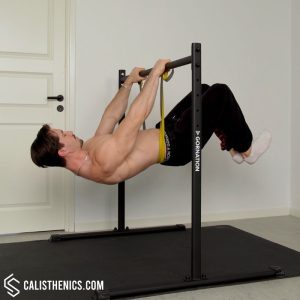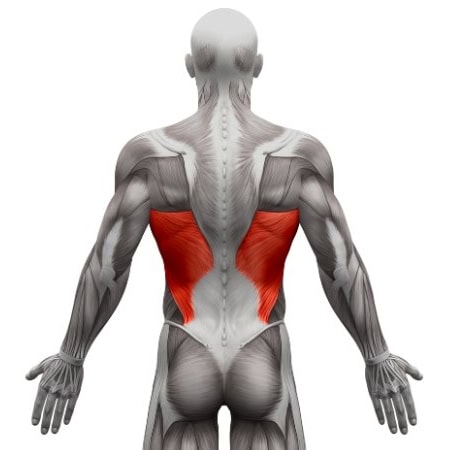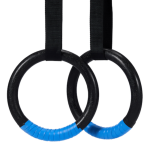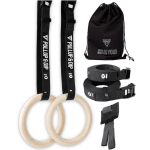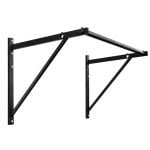Banded Front Lever
How to do Banded Front Lever?
The banded front lever is a progression exercise where the athlete uses a resistance band around the hips for support. This assistance reduces the intensity of the exercise, making it more manageable for athletes working toward mastering the full front lever. The band helps offset some of the load on the core and back muscles while maintaining the alignment and control needed for a proper front lever. It is an excellent tool for improving strength, body awareness, and technique.
Check out our ▶️ front lever training routine to unlock the full front lever!
The equipment used is the ▶️ Static Bar from GORNATION --> For 10% off use code CS10.
CREDIT: This video was prepared in collaboration with calisthenics athlete Simon Imhäuser who was performing the exercise in the video and calisthenics coach Daniel Flefil who shot and edited the video.
Steps to Perform a Proper Banded Front Lever:
1. Set Up the Resistance Band:
• Loop a sturdy resistance band around a pull-up bar or gymnastics rings.
• Ensure the band is securely anchored and can bear your weight without slipping.
2. Position Yourself with the Band Around Your Hips:
• Place the resistance band around your hips, just below your pelvis. This positioning will help lift your lower body and provide support during the movement.
• Grip the pull-up bar or gymnastics rings with a shoulder-width overhand grip (pronated grip).
3. Engage Your Core and Lift Into Position:
• Hang from the bar or rings with your arms fully extended and your shoulders engaged (scapular depression).
• Slowly lean back while engaging your core, lats, and glutes to lift your body into the front lever position.
4. Align Your Body Parallel to the Ground:
• Straighten your legs and keep your entire body in a horizontal line, parallel to the ground.
• Ensure your hips, shoulders, and feet are aligned, maintaining tension throughout your body.
5. Hold the Front Lever Position:
• Maintain the position for as long as possible, focusing on keeping your body still and aligned.
• Use the resistance band’s assistance to hold proper form while reducing the strain on your muscles.
6. Lower Back to the Starting Position:
• Slowly lower your body back to a hanging position with control, keeping tension in your muscles throughout the descent.
7. Repeat the Movement:
• Perform multiple holds or repetitions, gradually increasing the duration of each hold as your strength improves.
Benefits of the Banded Front Lever
• Progression Toward Full Front Lever: The resistance band helps reduce the difficulty, allowing athletes to practice proper form and alignment as they build strength.
• Builds Core and Back Strength: Engages the lats, core, and posterior chain, improving overall upper body strength.
• Improves Body Control and Alignment: The band-assisted hold allows you to focus on maintaining proper alignment and balance.
• Enhances Shoulder Stability: Promotes scapular control and shoulder engagement, reducing the risk of injury.
• Adaptable for All Skill Levels: The band’s resistance can be adjusted to suit beginners and intermediate athletes working toward advanced calisthenics skills.
• Low Equipment Requirement: Requires only a resistance band and pull-up bar or rings, making it accessible for home or outdoor workouts.
Common Mistakes to Avoid
• Using the Band as a Crutch: Avoid relying entirely on the band for support; focus on actively engaging your muscles to control the movement.
• Shrugging Shoulders: Keep your shoulders depressed to stabilize your upper body and avoid unnecessary strain.
• Sagging Hips: Maintain a straight line from your shoulders to your feet to prevent sagging or twisting.
• Choosing the Wrong Band Resistance: Using a band that is too strong or too weak can hinder progress; select one that challenges your strength while maintaining proper form.
• Rushing the Progression: Build strength gradually by transitioning to lighter bands as your muscles adapt.
Tips for the proper execution of Banded Front Lever
Choose the Right Band Resistance: Select a resistance band that provides enough support to help you maintain proper form but still challenges your strength.
Engage the Core and Lats: Keep your core tight and your lats engaged to stabilize your body and maintain alignment.
Focus on Full Body Tension: Squeeze your glutes, core, and legs to create a stable and rigid body position.
Maintain Scapular Depression: Keep your shoulders down and away from your ears to avoid strain and improve shoulder stability.
Progress Gradually: As you build strength, transition to lighter resistance bands to reduce assistance and increase difficulty.
Muscles worked when doing Banded Front Lever
Primary Muscles:
•Latissimus Dorsi (Lats): Provide stability and control, keeping the torso aligned and parallel to the ground.
•Core Muscles: The rectus abdominis, transverse abdominis, and obliques stabilize the torso and maintain alignment.
Secondary Muscles:
•Rhomboids and Trapezius: Assist in scapular depression and shoulder stabilization.
•Biceps: Engage isometrically to support the arms during the hold.
•Erector Spinae: Support spinal alignment and resist gravitational pull.
•Glutes: Activate to maintain hip alignment and support the lower body.
Primary Muscle(s):
Secondary Muscle(s):
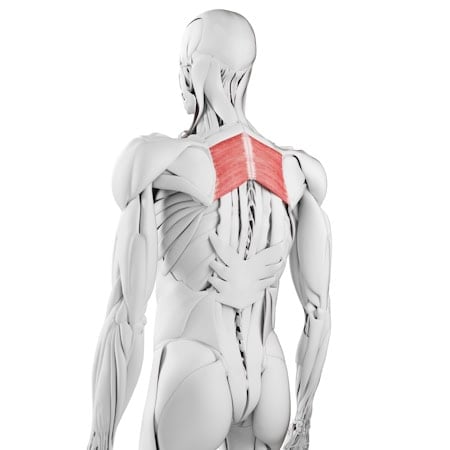
Rhomboid
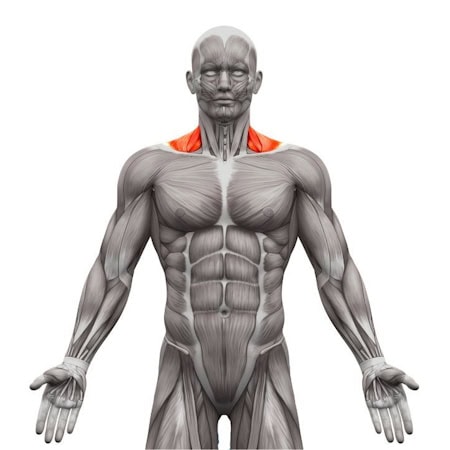
Trapezius
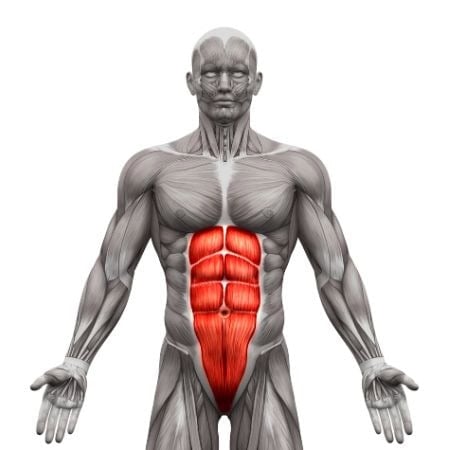
Abdominal
Adjust the difficulty of Banded Front Lever
How to make Banded Front Lever harder?
How to make Banded Front Lever easier?
How to make Banded Front Lever harder?
To make Banded Front Lever harder:
-
Use a Lighter Resistance Band: Gradually transition to bands with less resistance to increase the load on your muscles.
-
Increase Hold Duration: Extend the time you hold the front lever position to build endurance and control.
-
Transition Toward Full Front Lever Without the Band: Use progressively lighter bands until you can hold the front lever without assistance.
-
Perform Controlled Lowering: Start in the banded front lever position and slowly lower your body back to a hanging position to further challenge your muscles.
How to make Banded Front Lever easier?
To make Banded Front Lever easier:
-
Use a Heavier Resistance Band: Start with a band that provides more support to help lift your lower body and reduce the load on your core and lats.
-
Perform Partial Holds: Instead of holding the full front lever position, work on partial lifts or dynamic repetitions.
-
Start with a Tucked Variation: Perform a banded tuck or advanced tuck front lever to build strength gradually.

